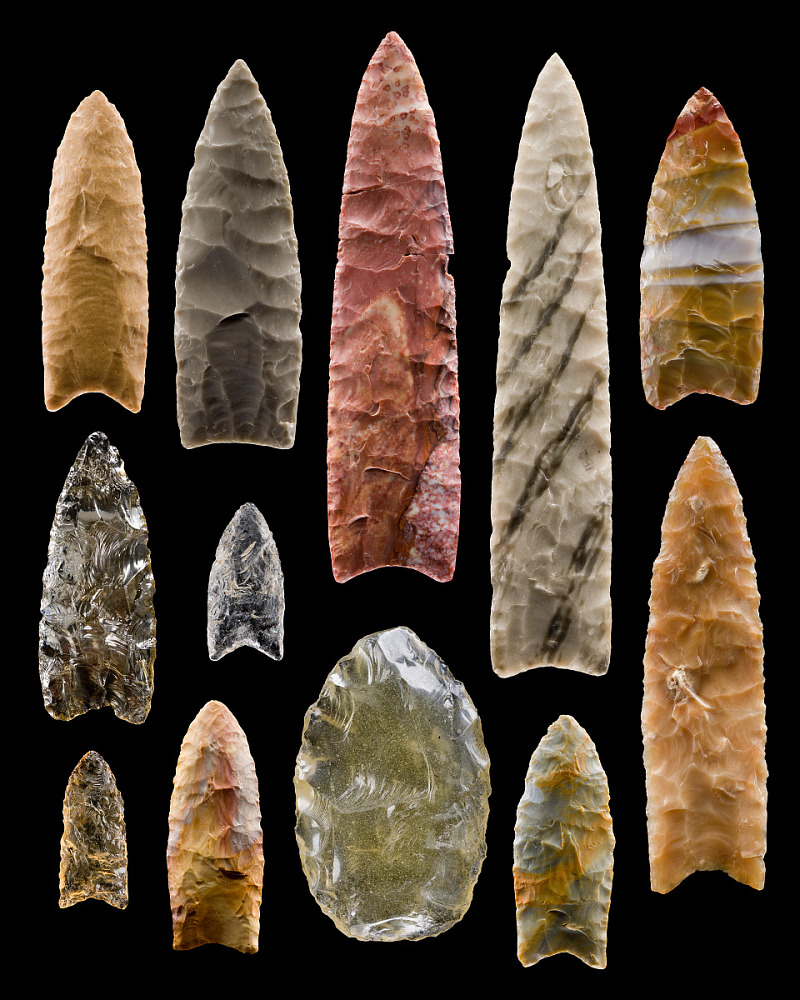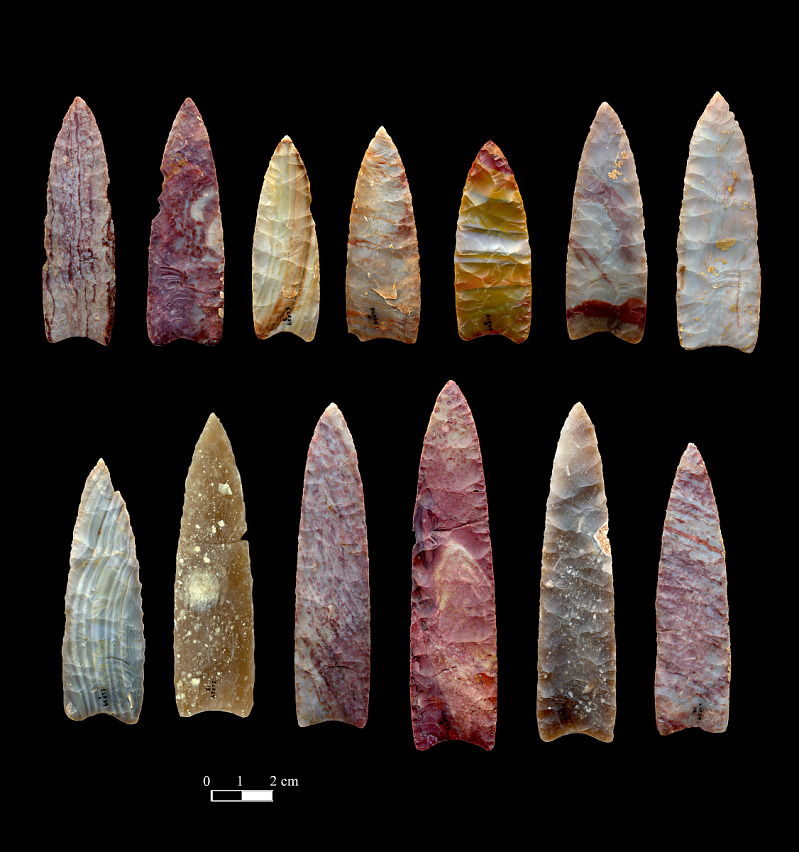Clovis caches
Clovis caches refer to groups of lithics that have been recovered together. These objects were intentionally placed together, rather than being the product of a workshop. They were hidden by their owner who likely forgot the location or died without recovering the tools.
The most commonly found tool in Clovis caches is not points – it’s bifaces. These are multipurpose tools that can be knapped into points or kept as large pieces of stone that could function as axes or knives.
Caches often have high quality materials that originated in areas far from where they are eventually found.
Right now, it can only be hypothesized what purpose caches had. Were they ritualistic? Were they burials? Was it a backup strategy in material sparse areas?
The Anzick Cache and Burial
The Anzick cache in Montana contained the remains of a child interned with the lithics. This brings into question even calling it a cache, considering it was never intended to be returned to. Regardless, it still shows a good representation of the objects Clovis people found important – for someone they cared about deeply.
Buried with the individual was red ochre – a common Paleolithic material thought to have been ritualistic. Bifaces were recovered as well as mammoth bone tools.
The discovery of this burial has opened the conversation that other caches may have also been burials at their inception.¹


the drake cache
References:
¹Kornfeld, Marcel, George C. Frison, Mary Lou Larson, Bruce A. Bradley, and George C. Frison. Prehistoric Hunter-Gatherers of the High Plains and Rockies. 3rd ed. Walnut Creek, Calif: Left Coast Press, 2010.

